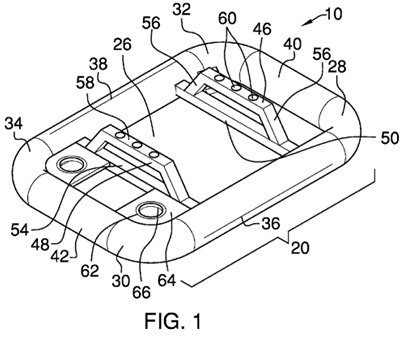Addressing the issue of new invalidity theories offered during inter partes review (IPR) proceedings, the US Court of Appeals for the Federal Circuit held that a petitioner does not improperly offer new theories when it merely expands on previously raised arguments and responds to a patent owner’s assertions without advancing a “meaningfully distinct [invalidity] contention.” Rembrandt Diagnostics, LP v. Alere, Inc., Case No. 21-1796 (Fed. Cir. Aug. 11, 2023) (Moore, C.J.; Reyna, Dyk, JJ.) The Court further concluded that the patent owner waived its new theories argument by raising a general objection that did not identify which theories were allegedly new.
Alere filed an IPR petition challenging a Rembrandt patent directed to test assay devices and methods for testing biological fluids. Alere argued that the claims were obvious over two combinations of prior art references (among other grounds not at issue on appeal): MacKay in view of Charm or May, and Tydings in view of MacKay or Lee-Own. On remand from a previous appeal, the Patent Trial & Appeal Board ordered briefings on all non-instituted grounds set forth in Alere’s petition. Rembrandt filed a patent owner response without an expert declaration. Alere filed a reply attaching a declaration from its expert and responding to arguments raised by Rembrandt in its response and by the Board in its institution decision.
In a sur-reply, Rembrandt generally argued that Alere “resort[ed] to new theories in reply” but did not specifically contest the two combinations at issue while specifically objecting to other allegedly new theories. Relying on Alere’s expert testimony, the Board issued a final written decision finding the claims at issue unpatentable over the MacKay and Tydings combinations. Rembrandt unsuccessfully petitioned for Director rehearing and then appealed the decision, arguing that the Board abused its discretion by relying on Alere’s new theories and evidence and that there was a dearth of substantial evidence to support the Board’s determinations.
The Federal Circuit first considered whether Rembrandt had forfeited its new theories argument by raising a general objection without expressly objecting to the obviousness grounds at issue. Underscoring the fact that Rembrandt had specifically identified and objected to other allegedly new theories, the Court concluded that Rembrandt’s general objection was insufficient and that Rembrandt’s “objection” argument had been forfeited. The Court noted that holding otherwise would be unfair to the parties and the Board because such a general objection could not provide adequate notice.
Even though Rembrandt’s new theories argument had been waived, the Federal Circuit concluded that Alere’s reply arguments did not constitute new theories and evidence. As the Court noted, in its reply a petitioner must identify “with particularity . . . the evidence that supports the grounds for each challenge to each claim” and may “only respond to arguments raised in the corresponding opposition, . . . patent owner response, or decision on institution.” The Court further explained that a petitioner who asserts previously unidentified prior art disclosures or embodiments in its reply to make a “meaningfully distinct contention” impermissibly raises a [...]
Continue Reading
read more

 Subscribe
Subscribe



